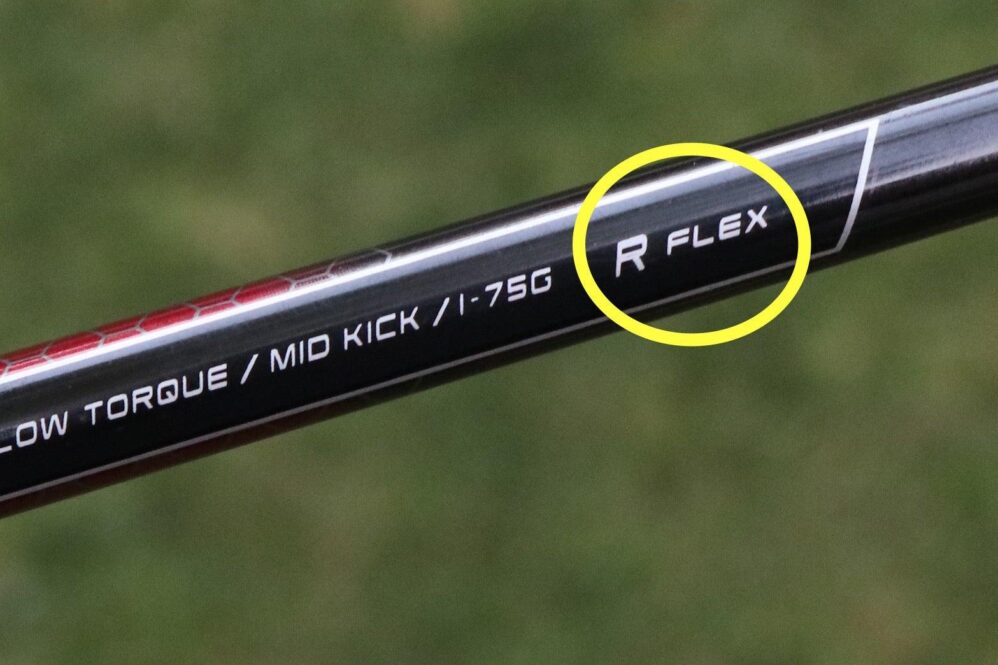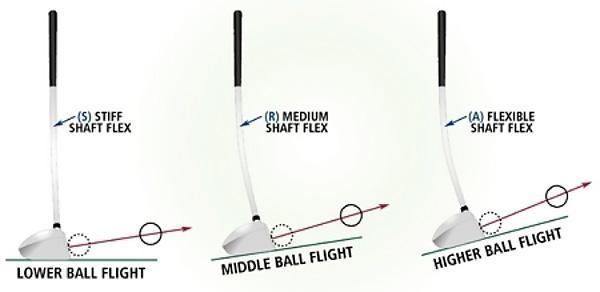The Influence of Shaft Flex on Golf Driver Performance Metrics
For both amateur and professional golfers aiming to enhance thier game, understanding the intricacies of golf club performance is crucial. Among the various factors that effect a driver’s effectiveness, shaft flex stands out as a meaningful aspect deserving detailed exploration. Shaft flex indicates how much a golf shaft bends during a swing and is vital in shaping key performance metrics such as swing speed, accuracy, distance, and overall consistency—elements essential for achieving success on the course.
Research shows that choosing the right shaft flex not only improves ball trajectory but also optimizes energy transfer throughout the swing, impacting both distance and precision. Given that golfers exhibit diverse swing characteristics influenced by age, physical strength, and tempo, aligning these traits with an appropriate shaft flex is critical for personalized performance enhancement. This article investigates the complex relationship between shaft flex and golf driver performance metrics while examining how different flex ratings—from Ladies (L) to Extra Stiff (X)—affect driver efficiency.
The Connection Between Shaft Flex and Ball Speed in Golf Drivers
The relationship between shaft flex and ball speed plays a pivotal role in golf driver performance as the flexibility characteristics can greatly influence swing dynamics. Shafts are categorized into various types: regular, stiff, and extra stiff—each designed for specific swing speeds and styles.Generally speaking, golfers with higher swing speeds tend to benefit from stiffer shafts that facilitate more effective energy transfer during swings leading to increased ball speed. Conversely, players with slower swings frequently enough find softer shafts provide better control which enhances optimal ball speed through improved launch conditions.
To grasp this dynamic fully requires an understanding of how shafts bend during swings; stiffer shafts experience less deformation which can minimize energy absorption resulting in greater ball speed at impact. Conversely, flexible shafts may load more deeply causing a lag effect that adds whip action beneficial for maximizing distance within suitable swing speed ranges. Thus finding an ideal balance of shaft flex is essential for optimizing ball speed based heavily on individual swinging styles.
| Swing Speed (mph) | Recommended Shaft Flex | Estimated Ball Speed (mph) |
|---|---|---|
| Below 75 | ladies (L) | Up to 130 |
| 75 – 85 | Regular (R) | 130 - 145 |
| 85 – 95 | Stiff (S) | 145 – 160 |
| 95+ | X-Stiff (X) |
Selecting suitable shaft flex can significantly improve outcomes by customizing club specifications according to each golfer’s unique attributes; recognizing one’s own swinging velocity alongside its interaction with different types of flexibility allows players to make informed choices aimed at maximizing driving efficiency.
Shaft Flex’s Role in Launch Angle and Spin Rate Dynamics
A comprehensive understanding of how shaft flexibility affects launch angle alongside spin rate is vital for any golfer striving towards enhanced results on course playability levels . The measurement does not merely reflect bendability but also influences interactions between clubface contact points upon impact moments . When matched correctly , it aids achieving optimal launch angles thereby enhancing both distance traveled & control over trajectories . Players exhibiting higher velocities typically gain advantages from utilizing stiffer options yielding lower angles yet possibly improving accuracy while those possessing slower tempos might find benefits arising from employing more flexible alternatives allowing elevated launches effectively lifting balls into airspace efficiently .
Additionally ,proper loading/unloading capabilities directly correlate with resultant spin rates produced post-impact events ; overly rigid configurations coudl lead towards diminished spins possibly extending travel distances albeit sacrificing controllability under windy conditions whereas softer variants may elevate spins enhancing trajectory management albeit risking loss distances if excessively pliable configurations are utilized .This delicate equilibrium underscores importance placed upon selecting appropriate setups considering dual metrics together ensuring optimal outcomes achieved consistently across varied scenarios encountered throughout gameplay experiences encountered regularly by avid enthusiasts alike!
| shaft Flex Type | Average Launch Angle | Average Spin Rate |
|---|---|---|
| Stiff | 10° | 2200 RPM |
| Regular | 12° | 2600 RPM |
An Examination Of How Clubhead Speed And Accuracy Are Affected By Shaft Flex Choices Made By Players On Course Performance Levels Achieved Over Time Periods Spanning Multiple Rounds Played Regularly Over Time Periods Spanning Multiple Rounds Played Regularly Over Time Periods Spanning Multiple Rounds Played Regularly Over time Periods Spanning multiple Rounds Played Regularly Over Time Periods Spanning Multiple Rounds Played Regularly Over Time Periods Spanning Multiple Rounds Played Regularly Over Time Periods Spanning Multiple rounds Played Regularly
Evaluating Effects Of Clubhead Speeds And Accuracy Based Upon Variations In Chosen Types Of Shafts Utilized During Gameplay Sessions Is Crucial For Maximizing Overall Effectiveness Achieved Throughout Each Round Encountered While Playing Courses Designed Specifically For Competitive Play! Research Indicates That Proper Matching Between Individual Swing characteristics Coupled With Selected Types can Enhance Overall Velocity Due To Improved Energy Transfer Mechanisms At Work Within each Configuration Used During Swings Executed Consistently Across Various situations Encountered Throughout Gameplay Experiences!
Accuracy Also Plays An Significant Role Here As Well! Choosing A Flexible Option That Bends Appropriately According To Player Needs Can Lead Towards More Consistent Strikes resulting In Reduced Dispersion Rates Observed after Shots Have Been Taken! Studies Show Those Utilizing Correct Options Report greater Confidence Leading Towards Improved Alignment Precision Achieved When Hitting Targets Set Up Prior to Taking Shots Off Tee Boxes Or Fairways Alike!
To Illustrate Impact Consider Key Metrics Observed During Testing Sessions Conducted Using Different Types:
| Shaft Type Selected Based Upon Preferences expressed by Players Participating In Tests Conducted Recently!
<td Average Clubhead Speeds Measured During Trials Conducted Recently! <td Dispersion Rates Recorded Following Each Shot Taken Off Tee Boxes Or Fairways Alike! |
|---|





